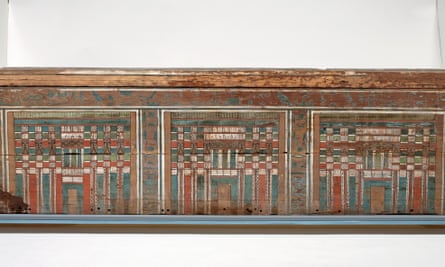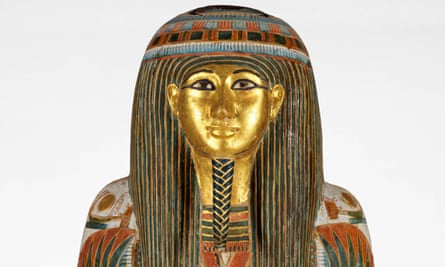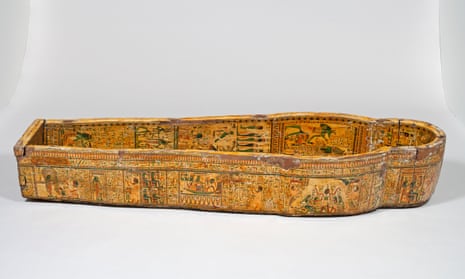Eternal rest could last a surprisingly short time in ancient Egypt.
Surprising research, revealed for the first time in an exhibition opening next week at the Fitzwilliam Museum in Cambridge, exposes that many were buried in new and decorated coffins, patched together from pieces of older coffins; some made only a few generations earlier.
“How long did immortality last? This research raises many interesting questions which we can’t yet answer,” said curator Helen Strudwick. “Did people know, when they chose their coffins, that they were secondhand? Were recycled coffins cheaper?”

The raw materials can only have been obtained by tomb robbers, who most likely would have removed the original occupants, whose families would have paid a large sum for the coffins and the painted inscriptions promising a good afterlife.
Most Egyptian tombs found by archaeologists have been robbed at some point. It had been assumed that the thieves were targeting the gold jewellery and gemstones and other precious objects buried with the dead. The new research raises the intriguing possibility that the coffins themselves were as valuable as any of the contents.
Strudwick wonders how widespread and organised the trade was, and whether the coffin makers kept a stock of broken up coffins at the back of the workshop.
Some of the coffins were evidently bought off the peg and personalised with elaborate inscriptions naming and praising the dead, while others incorporating recycled material were high-status objects commissioned in life. A set of coffins made for Nespawershefyt, chief of scribes at the temple of Amun-Re at Thebes, covered in painted decoration and inscriptions, were made years before his death and later altered to promote his achievements – yet the x-ray and CT scans show that they include parts of at least one older coffin, and were pieced together from many bits of wood, with older dowel and mortise holes carefully filled. Wads of linen, clay and straw were used to pack other splits and gaps.

Photograph: Jaymes Sinclair/The Fitzwilliam Museum
His coffins were among the first objects in the Egyptian collection, given by two members of the university in 1822, just six years after the Fitzwilliam Museum was founded. The ingenious craftsmen literally left their mark: the research also revealed their finger and palm prints smudged in wet varnish inside the lid.
Another coffin from the collection is being displayed for the first time, revealing the calamitous split from shoulder to shin in the single log which was being hollowed out to hold the mummified corpse. Wood was a precious commodity and many hours of work would have gone into the coffin, so that when it was repaired it was done so by stitching it together with animal sinews, which would have shrunk and pulled the joint tighter as they dried. The repair was so skilfully made that it astonished the curators when they opened the coffin almost a century after it came into the collection.
One man, whose coffin was made of 74 pieces of wood pegged together with 143 dowels, was in a good position to know about the illicit trade, since the inscriptions reveal that Pakepu – a water carrier who lived in western Thebes in about 700-650 BCE – worked in the funeral industry and was paid to recite prayers and pour offerings for the dead.

Strudwick, and Julie Dawson who led the conservation work, believe that one of the explanations must be that suitable timber was so scarce: one early coffin was made of curved planks cut from a fig tree that must have been bent like a banana, and another made for a woman called Nakht was made of recycled cedar planks, a particularly coveted wood which had to be imported from Lebanon.
“Any kind of wood was precious and would never just be thrown away,” Strudwick said. “Even today if you buy a chair in Egypt it’s likely to be metal cleverly painted to look like wood. But did Nakht know that somebody else has once lain in her beautiful coffin – and would she have been horrified?”
- Death on the Nile, Fitzwilliam Museum Cambridge, free, 23 February-22 May










Comments (…)
Sign in or create your Guardian account to join the discussion